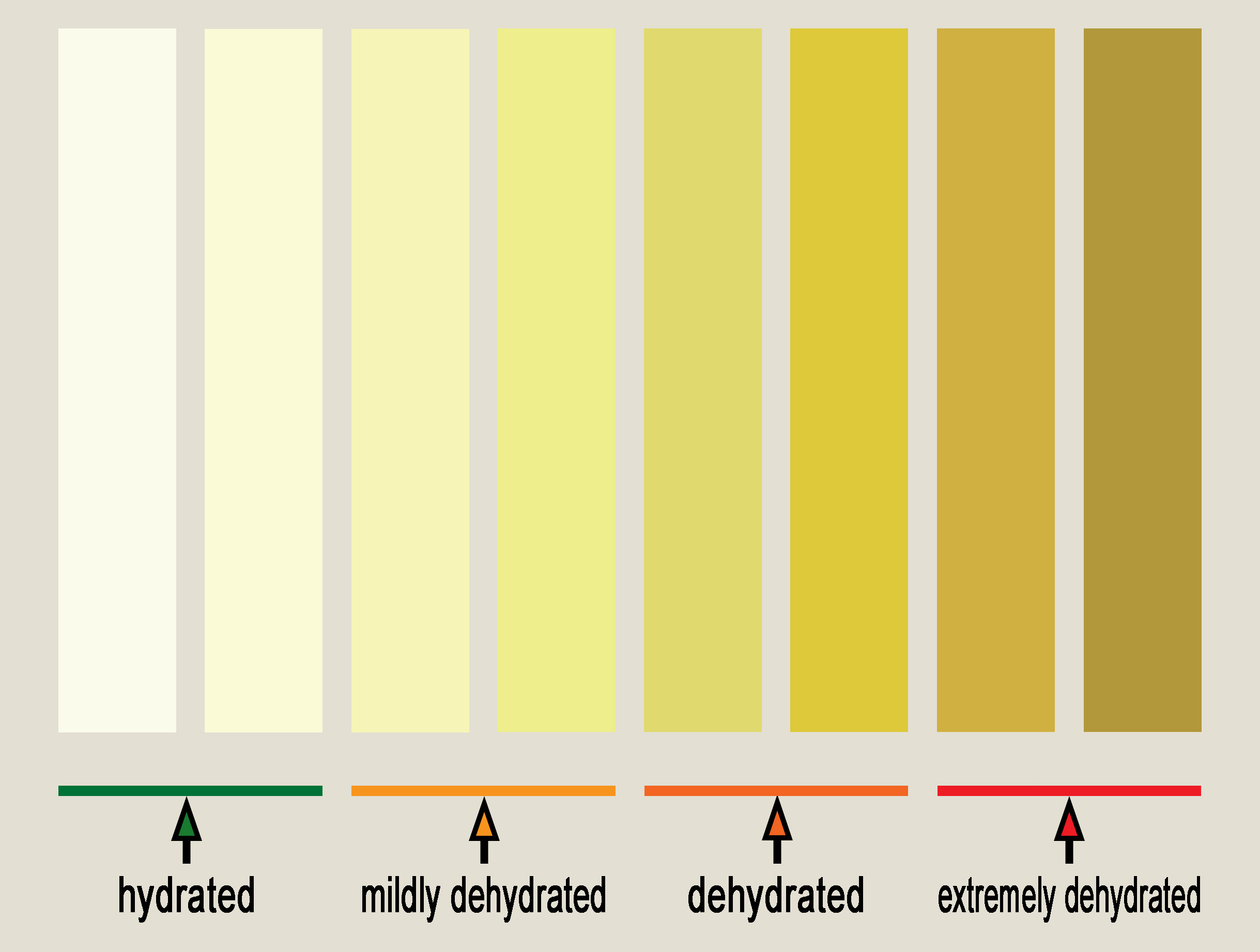7.5: Understanding Dehydration and Heat Illnesses
- Page ID
- 21146
Learning Objectives
- Summarize the following fluid and electrolyte imbalance disorders:
- overhydration
- dehydration
- various heat illnesses (heat cramps, heat exhaustion, heat stroke)
Disorders related to fluid and electrolyte imbalance include overhydration, dehydration, and heat illnesses (heat cramps, heat exhaustion, and heat stroke).
Overhydration
Overhydration (sometimes called water intoxication) can occur with excessive water intake or excessive water retention. This results in hyponatremia; symptoms of hyponatremia include nausea, muscle cramps, confusion, dizziness, and in severe cases, seizures, coma and death.
Dehydration
Dehydration refers to water loss from the body without adequate replacement; in other words, fluid loss exceeds fluid intake. It can result from either water loss or electrolyte imbalance, or, most commonly, both. Dehydration can be caused by prolonged physical activity without adequate water intake, heat exposure, excessive weight loss, vomiting, diarrhea, blood loss, infectious diseases, malnutrition, electrolyte imbalances, and very high glucose levels. Physiologically, dehydration decreases blood volume. The water in cells moves into the blood to compensate for the low blood volume, and cells shrink. Signs and symptoms of dehydration include thirst, dizziness, fainting, headaches, lack of concentration, low blood pressure, fatigue, low (dark color urine) to no urine output, inability to regulate body temperature, weakness and lethargy, and, in extreme cases, loss of consciousness and death. Signs and symptoms are usually noticeable after about 2% of total body water is lost. The elderly, infants, and athletes are the most at risk for dehydration.
Fluid replacement guidance from the American College of Sports Medicine focuses on preventing excessive dehydration during exercise (defined as >2% body weight loss) and replacing fluid losses after exercise by gradually drinking ~1.5 liters of fluid for each kilogram of body weight lost during the activity (20-24 fluid ounces for each pound lost). During exercise, consuming beverages containing electrolytes and carbohydrates can provide benefits over water alone under certain circumstances (e.g., vigorous activity lasting longer than one hour). After exercise, the goal is to replace any fluid and electrolytes lost which can be accomplished with normal meals/snacks and water under most circumstances.1 Another method that can be used to prevent dehydration (by all people) is to regularly observe urine color and drink enough liquids to maintain clear to pale yellow urine (see Figure \(\PageIndex{1}\)).
 Figure \(\PageIndex{1}\): Urine color chart. (CC BY-SA 4.0; by Petar Milosevic via Wikimedia Commons)
Figure \(\PageIndex{1}\): Urine color chart. (CC BY-SA 4.0; by Petar Milosevic via Wikimedia Commons)Caffeine and alcohol consumption can increase urinary output. If the output is not matched by input, then the person can become dehydrated.
Chronic dehydration is linked to higher incidences of some diseases. There is strong evidence that low-hydration status increases the risk for kidney stones and exercise-induced asthma. There is also some scientific evidence that chronic dehydration increases the risk for kidney disease, heart disease, and the development of hyperglycemia in people with diabetes. Older people often suffer from chronic dehydration as their thirst mechanism is no longer as sensitive as it used to be.
Heat Illnesses
Heat Cramps
Heat cramps are painful muscle cramps (usually in the abdomen, arms, or legs) that develop during vigorous physical activity in a hot environment. The cramps are caused by a fluid and electrolyte imbalance. Stopping activity immediately, resting in a cool place, and drinking a sports beverage or juice are steps to take to speed recovery.
Heat Exhaustion
Heat exhaustion typically occurs when people are engaging in vigorous physical activity in a hot environment. Heat exhaustion is characterized by heavy sweating, dizziness, rapid breathing, and fast pulse. Immediate cooling and fluid intake are critical to avoid heat stroke.
Heat Stroke
Heat stroke is a life-threatening condition that occurs when the body temperature is greater than 105.1°F (40.6°C). It is the result of the body being unable to sufficiently cool itself by thermoregulatory mechanisms. Dehydration is a primary cause of heat stroke as there are not enough fluids in the body to maintain adequate sweat production, and cooling of the body is impaired. Signs and symptoms are dry skin (absence of sweating), dizziness, trouble breathing, rapid pulse, confusion, agitation, seizures, coma, and possibly death.
Key Takeaways
- Overhydration (water intoxication) can occur with excessive water intake or excessive water retention and results in hyponatremia.
- Dehydration decreases blood volume.
- The elderly, infants, and athletes are the most at risk for dehydration.
- Chronic dehydration is linked to higher incidences of some diseases.
- Heat exhaustion is characterized by heavy sweating, dizziness, rapid breathing, and fast pulse.
- Dehydration is a primary cause of heat stroke; symptoms of heat stroke include dry skin (absence of sweating), trouble breathing, rapid pulse, and confusion.
References
- Exercise and Fluid Replacement. Medicine & Science in Sports & Exercise. 2007;39(2):377-390. doi: 10.1249/mss.0b013e31802ca597.

